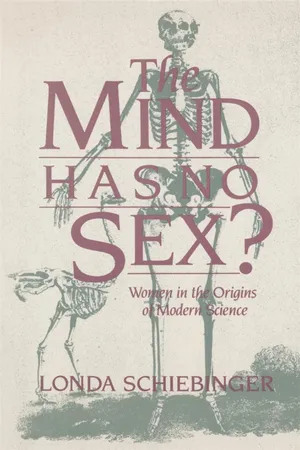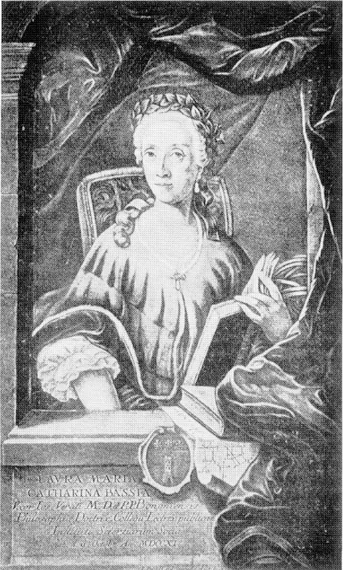![]()
1
Institutional Landscapes
It would be a pleasant thing indeed to see a lady serve as a professor, teaching rhetoric or medicine; or to see her marching in the streets, followed by officers and sergeants; or playing the part of an attorney, pleading before judges; or seated on a bench to administer justice in the supreme court; or leading an army, serving in battle; or speaking before states and princes as the head of an embassy.
—François Poullain de la Barre, 1673
In 1910 the physicist Marie Curie was recommended for election to the prestigious Académie des Sciences in Paris. The following year Curie would become the first person ever—man or woman—to win a second Nobel prize. The fact that Curie was a woman provoked animated discussion in the Comité Secret and throughout the Académie. Some members felt that the question of whether to admit women to France’s academy system was of sufficient import that it should be raised at a plenary session of the five academies constituting the Institut de France. Such a meeting was held, and there they read to the president of the institute a petition against Curie’s election, reminding him that this was not the first time that a woman had presented herself for election to an academy: George Sand was not admitted to the Académie Française, nor Rosa Bonheur to the Académie des Beaux Arts, nor Sophie Germain to the Académie des Sciences. Curie’s opponents urged that tradition be respected, despite the brilliance of the name advanced.
When Curie’s name was finally put to a vote within the Académie des Sciences, she lost to Edouard Branly, a pioneer in wireless communication, by a narrow margin of two votes. But Curie’s case raised the more general question whether women should be admitted to any of the great academies of France. This issue was settled by a greater margin; by a vote of 90 to 52, members of the Institut de France decided that no woman should ever be elected to its membership. Jacques Bétolaud (a lawyer and member of the Institut’s Académie des Sciences Morales et Politiques) and his confrères had carried the day: by their vote members of the Institut held it “eminently wise to respect the immutable tradition against the election of women.” Though some agreed with Henri Poincaré that merit should be rewarded wherever it may be found, others preferred not “to break the unity of this elite body.”1
But was the tradition to which members of the institute appealed in fact immutable? Today we tend to assume that the exclusion of women from science was not an issue of debate until the late nineteenth or even the twentieth century. Women were not scientists, so what was there to debate? Evidence from the seventeenth and eighteenth centuries, however, suggests that at least some considered women’s participation in science an open question. Not long after the founding of the Académie Française in 1635 (an important precursor to the Académie des Sciences), academy critic Gilles Ménage submitted the names of three celebrated women for consideration—Mademoiselle de Scudéry, Madame des Houlières, and Madame Dacier. None of these women were ever admitted, yet they were not excluded without serious challenge. Indeed, it would be a mistake to see the exclusion of women from subsequent institutions of science as a foregone conclusion. The landscape was a varied one, rolling with peaks of opportunity and valleys of disappointment. Traditions that to some twentieth-century academicians seemed inevitable had, in fact, been crafted through a process of conflict and negotiation in previous centuries. The complexities of this process may be illustrated by two related stories: the shifting institutional foundations of modern science during the revolutions that mark its origins and the changing fortunes of women in those institutions.
Natural philosophy was in many ways a new enterprise in seventeenth-century Europe, struggling for recognition within established hierarchies. Its relation to church and state and its role in the larger society were in a state of flux. Important questions about the nature of the new science—its ideals and methods, its proper limits, and who should mold these—remained to be answered. At this pivotal point, natural philosophers were attempting to free themselves from the fetters of the medieval university and to establish new institutions more responsive to their needs. What these changes would mean for women was unclear. When science emerged from a social setting—the Renaissance court, for example—where high-ranking women held power and prestige, that prestige carried them into the world of natural philosophy in much the same way it gave them (often limited) rights to rule entire lands. In a world organized on the basis of birth, well-born women simply outranked scholars. The relative prestige of the aristocrat and the scientist, however, was to change over the course of the seventeenth and eighteenth centuries. While the prestige of science waxed, that of the nobility waned; in time women of the aristocracy lost their place in scientific settings.
Modern scientific institutions have their roots in the medieval world, in particular the monasteries and universities of Europe. Precedents for women’s participation in learning were set in these institutions. The Renaissance brought new social settings for science—princely courts and royal academies. By the seventeenth century a third setting was vying for the attentions of the learned: the Parisian salon, a woman’s institution par excellence. The salon, I contend, offered a real alternative to the organization of intellectual life.
Monasteries and Universities
Without proper training and access to libraries, instruments, and networks of communication, it is difficult for anyone—man or woman—to make significant contributions to knowledge. Historically, women have not fared well in official institutions of learning. From the medieval to the modern university, the history of women in these institutions has been the history of their exclusion. Yet this history has not been uniform or predetermined; certain times have favored women’s participation more than others. One institution, the medieval convent, provided an opportunity for women to pursue learning. Between the sixth and eleventh centuries, the church acquired a virtual monopoly on European literacy and education. Daughters of feudal lords, without land or inheritance, took vows in local monasteries, and as members of these monasteries came to wield temporal as well as spiritual power. Clerical life was a respectable avenue to power, for men and women alike. A number of women became renowned for their learning; these included the poet and teacher St. Radegund, abbess of Poitiers, and Hildegard von Bingen, the most notable medieval woman author on medicine, natural history, and cosmology.2
The rise of universities in the twelfth through fifteenth centuries, however, brought a decline in educational opportunities for women. In England women lost their place in spiritual and intellectual life with the closing of the convents. Henry VIII appropriated church lands and used part of the monies to expand the English university system in the sixteenth century. The revenues and lands of the nunnery of St. Radegund, an important center of learning for women, were transferred to Jesus College, Cambridge. Whereas religious houses had been centers of learning for both men and women, English universities were open only to men. This pattern was repeated in various forms throughout Europe at this time: women were displaced from centers of learning with the establishment of universities.3
From their beginnings European universities were, in principle, closed to women. Unlike monasteries, universities provided formal training in theology, medicine, and law, aimed at preparing young men for careers in government, teaching, law, medicine, or the church. Women, barred from these careers, were not expected to enter university.4
What was true of medieval universities was equally true of the reformed universities in the sixteenth century. University training became especially important as expanding bureaucracies of the new nation-states required more civil servants. As the nobility of the robe fused with the nobility of the sword, noblemen in England and France perceived that education was necessary to prepare young gentlemen to wield power in the state. In England this new conjunction between state service and education brought forth what Lawrence Stone has called a “revolution in education.”5 Enrollments expanded, including larger numbers of young men from the gentry and middle classes.6 This revolution was not, however, to extend to women. Though women’s advocates argued long and hard for their admission to universities, women of all classes remained barred from university education.
There were, of course, always exceptions. A small number of women did study and teach at universities beginning in the thirteenth century—primarily in Italy In 1296 Bettisia Gozzadini lectured in law at the University of Bologna. Novella d’Andrea replaced her deceased father as professor of canon law at the University of Bologna in the fourteenth century, lecturing from behind a curtain (as legend has it) in order not to distract students from their studies by her very great beauty.7 Women continued to study at Italian universities throughout the seventeenth and eighteenth centuries. In 1678 Elena Cornaro Piscopia became the first woman to receive the doctorate of philosophy (though not of theology as she originally wanted) at Padua.8 Maria Agnesi of Milan became well known for her textbook on differential and integral calculus, Istituzioni analitiche, published in 1748. She is best known perhaps for her formulation of the versiera, the cubic curve that has come to be known as the “witch of Agnesi.” In trying to persuade her to take up a chair of mathematics and natural philosophy at the University of Bologna, Pope Benedict XIV wrote to her: “from ancient times, Bologna has extended public positions to persons of your sex. It would seem appropriate to continue this honorable tradition.”9 She accepted this appointment only as an honorary one, and after her father’s death in 1752 she withdrew from the scientific world in order to devote herself to religious studies and to serving the poor and aged.10
The most exceptional woman in this regard was Laura Bassi, professor of physics at the University of Bologna (see Figure 1). She received her doctorate in philosophy at Bologna in 1733 and shortly thereafter became the first woman to occupy a chair of physics at a university. Celebrated for her work in mechanics, Bassi became a member of the Academy of Science in Bologna. Like other members she prepared and presented annual papers (“On the compression of air” [1746], “On the bubbles observed in freely flowing fluid” [1747], “On bubbles of air that escape from fluids” [1748], and so forth) and received a small stipend. She also invented various devices for her experiments with electricity. In 1776 she replaced Paolo Balbi as professor of physics at the Institute of Bologna. The Englishman Charles Burney, who met Bassi during his tour of Italy and was much impressed, found her “though learned, and a genius, not at all masculine or assuming.”11
Figure 1. Laura Bassi (1711–1788), professor of physics at the University of Bologna and member of the Academy of Science in Bologna, at work in her cabinet wearing her doctoral wreath of laurel. From Alphonse Rebière, Les Femmes dans la sc...

